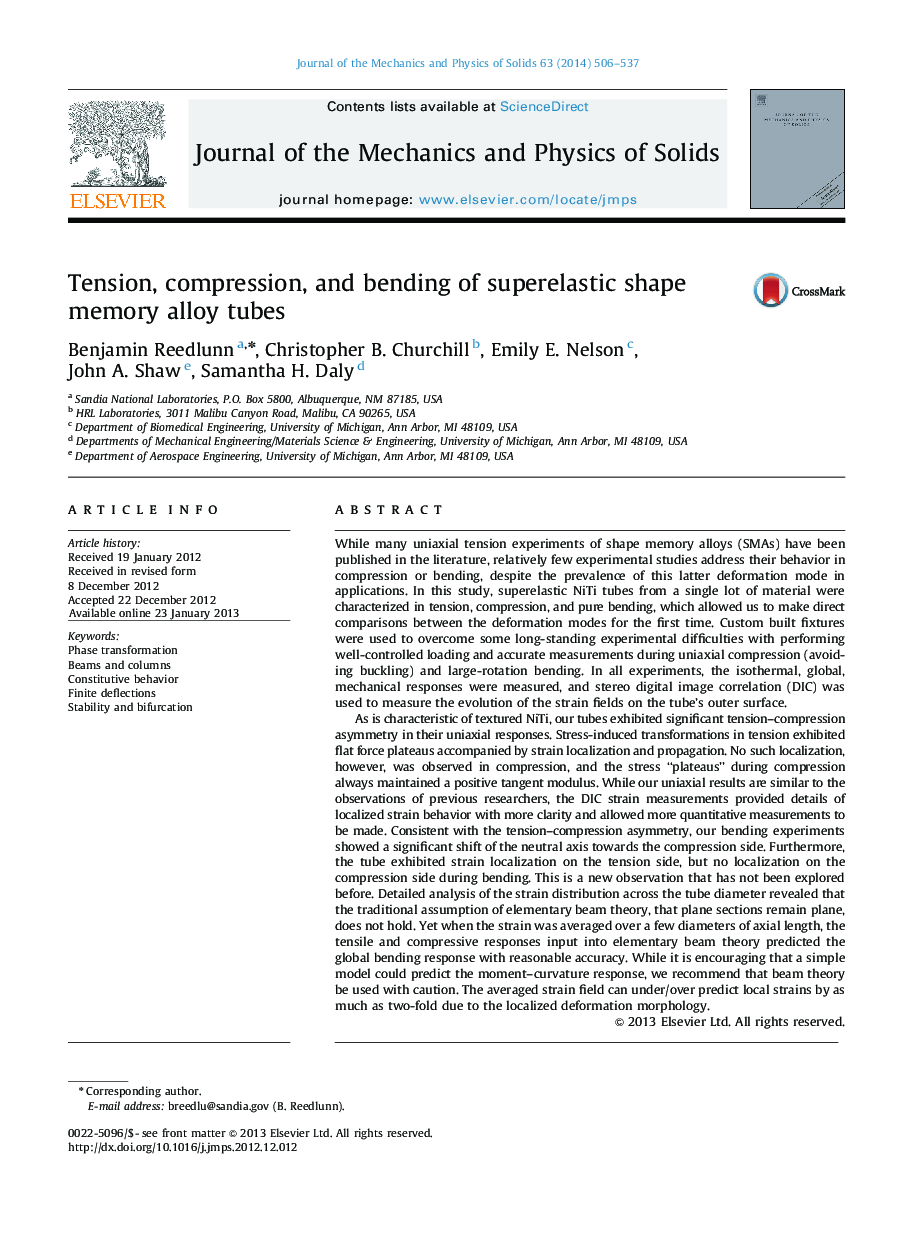| کد مقاله | کد نشریه | سال انتشار | مقاله انگلیسی | نسخه تمام متن |
|---|---|---|---|---|
| 793158 | 1467080 | 2014 | 32 صفحه PDF | دانلود رایگان |
While many uniaxial tension experiments of shape memory alloys (SMAs) have been published in the literature, relatively few experimental studies address their behavior in compression or bending, despite the prevalence of this latter deformation mode in applications. In this study, superelastic NiTi tubes from a single lot of material were characterized in tension, compression, and pure bending, which allowed us to make direct comparisons between the deformation modes for the first time. Custom built fixtures were used to overcome some long-standing experimental difficulties with performing well-controlled loading and accurate measurements during uniaxial compression (avoiding buckling) and large-rotation bending. In all experiments, the isothermal, global, mechanical responses were measured, and stereo digital image correlation (DIC) was used to measure the evolution of the strain fields on the tube's outer surface.As is characteristic of textured NiTi, our tubes exhibited significant tension–compression asymmetry in their uniaxial responses. Stress-induced transformations in tension exhibited flat force plateaus accompanied by strain localization and propagation. No such localization, however, was observed in compression, and the stress “plateaus” during compression always maintained a positive tangent modulus. While our uniaxial results are similar to the observations of previous researchers, the DIC strain measurements provided details of localized strain behavior with more clarity and allowed more quantitative measurements to be made. Consistent with the tension–compression asymmetry, our bending experiments showed a significant shift of the neutral axis towards the compression side. Furthermore, the tube exhibited strain localization on the tension side, but no localization on the compression side during bending. This is a new observation that has not been explored before. Detailed analysis of the strain distribution across the tube diameter revealed that the traditional assumption of elementary beam theory, that plane sections remain plane, does not hold. Yet when the strain was averaged over a few diameters of axial length, the tensile and compressive responses input into elementary beam theory predicted the global bending response with reasonable accuracy. While it is encouraging that a simple model could predict the moment–curvature response, we recommend that beam theory be used with caution. The averaged strain field can under/over predict local strains by as much as two-fold due to the localized deformation morphology.
► Stereo DIC showed strain localization in tension, but not in compression.
► Custom built fixtures used in compression and large-rotation pure bending tests.
► Plane sections did not remain plane in bending, due to localizations on tension side.
► Tension side strain reached 2% prior to localization (2× higher than in pure tension).
► Despite localizations, beam theory accurately predicted global bending response.
Journal: Journal of the Mechanics and Physics of Solids - Volume 63, February 2014, Pages 506–537
